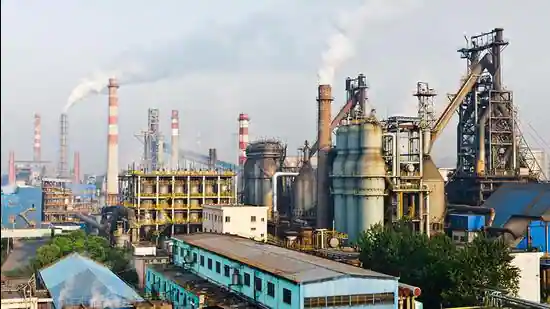LED flameproof lighting is a type of lighting that is designed to function in hazardous environments where there is a risk of explosion or fire. These lights are built to withstand high temperatures and pressure, and they are designed to prevent the ignition of flammable gases or vapors.

What are the benefits of using led flameproof lighting?
LED flameproof lighting has several benefits over traditional lighting options. Some of the key benefits include:
Safety: LED flameproof lighting is designed to operate in hazardous environments where there is a risk of explosion or fire. These lights are built to withstand extreme temperatures and pressures, making them much safer than traditional lighting options.
Energy Efficiency: LED flameproof lighting uses much less energy than traditional lighting options, which can result in significant cost savings over time. These lights also have a longer lifespan than traditional lighting options, further reducing maintenance and replacement costs.
Durability: LED flameproof lighting is built to last, even in harsh environments. These lights are resistant to shock, vibration, and corrosion, making them ideal for use in industrial settings.
Environmental Friendliness: LED flameproof lighting is much more environmentally friendly than traditional lighting options. These lights do not contain harmful chemicals or gases, and they use much less energy, reducing their carbon footprint.
Overall, LED flameproof lighting provides a safer, more energy-efficient, and environmentally friendly lighting option for hazardous environments.
What types of hazardous environments require the use of LED flameproof lighting?
Hazardous environments such as oil and gas refineries, chemical plants, mining operations, and areas with flammable gases or liquids require the use of LED flameproof lighting.
What is the difference between LED flameproof lighting and regular LED lighting
LED flameproof lighting and regular LED lighting differ in their design and construction to ensure safety in hazardous environments where flammable gases, vapors, and dust are present.
LED flameproof lighting is designed to prevent the ignition of explosive gases or vapors that may be present in the environment. They have a rugged construction and are sealed to prevent any potential sparks from escaping from the fixture. These fixtures are typically used in industrial settings where there is a risk of flammable gases and vapors.
On the other hand, regular LED lighting is not designed to prevent ignition and may not be suitable for use in hazardous environments. They are typically used in commercial and residential settings where there is no risk of explosive gases or vapors.
In summary, the main difference between LED flameproof lighting and regular LED lighting is their design and construction, which ensures safety in hazardous environments.
How does LED flameproof lighting prevent explosions in hazardous environments?
LED flameproof lighting is designed to prevent explosions in hazardous environments by containing any potential explosion or ignition within the enclosure of the light fixture. These fixtures are specifically designed to be used in environments where there may be flammable gases, vapors, or dust that could ignite and cause an explosion.
The design of LED flameproof lighting includes several features that help prevent explosions. Firstly, the fixtures are constructed with a housing that is able to withstand high temperatures and pressure. This housing is typically made from materials that are non-conductive and non-sparking, such as cast aluminum or stainless steel.
Additionally, the LED flameproof lighting fixtures are sealed tightly to prevent any flammable gases, vapors, or dust from entering the enclosure. This is accomplished through the use of gaskets, seals, and other barriers that prevent any external substances from entering the fixture.
Furthermore, the electrical components inside the LED flameproof lighting fixture are specially designed to prevent sparks and other sources of ignition. These components are often isolated from each other and surrounded by insulation or other materials that can withstand high temperatures and pressure.
Overall, LED flameproof lighting is a critical safety measure in hazardous environments. By containing potential explosions within the fixture itself, these lights help prevent serious accidents and injuries that could occur in environments with high levels of flammable substances.
What are the benefits of using LED flameproof lighting in hazardous environments?
LED flameproof lighting offers several benefits in hazardous environments, including:
Safety: LED flameproof lighting is designed to prevent the ignition of explosive gases, vapors, and dust in hazardous environments. It reduces the risk of explosions and fire, which can cause serious injury or even fatalities.
Energy efficiency: LED flameproof lighting uses less energy compared to traditional lighting solutions. It can provide significant energy savings, reducing operating costs and improving the overall efficiency of hazardous environments.
Durability: LED flameproof lighting is built to withstand harsh environments, including extreme temperatures, vibration, and shock. It is designed to be long-lasting and requires less maintenance than traditional lighting solutions.
Improved visibility: LED flameproof lighting provides bright and clear illumination, improving visibility in hazardous environments. It can help workers perform their tasks safely and accurately, reducing the risk of accidents and errors.
Environmental benefits: LED flameproof lighting is a more environmentally friendly lighting option than traditional lighting solutions. It contains no toxic materials and generates less heat, reducing the environmental impact of hazardous environments.
Overall, LED flameproof lighting is a safer, more efficient, and environmentally friendly lighting option for hazardous environments. It helps improve visibility, reduce the risk of accidents, and lower operating costs, making it an ideal lighting solution for a range of hazardous environments.
Are there any regulations or standards that require the use of LED flameproof lighting in certain industries?
Yes, there are regulations and standards that require the use of LED flameproof lighting in certain industries. Flameproof lighting is designed to prevent the ignition of flammable gases, vapors, and dust in hazardous environments. It is commonly used in industries such as oil and gas, petrochemicals, chemicals, pharmaceuticals, and mining where there is a risk of explosion.
In the United States, the National Electric Code (NEC) and the Occupational Safety and Health Administration (OSHA) set standards for electrical equipment used in hazardous locations, including flameproof lighting. The NEC classifies hazardous locations based on the type and level of flammable substances present and provides guidelines for the installation of electrical equipment in these locations. OSHA also regulates the use of electrical equipment in hazardous locations under its Hazardous Locations Standard (29 CFR 1910.307).
Similarly, the International Electrotechnical Commission (IEC) has developed standards for flameproof lighting that are recognized globally. The IEC 60079 series of standards provides guidance for the selection, installation, inspection, and maintenance of electrical equipment in explosive atmospheres, including flameproof lighting.
In summary, regulations and standards require the use of LED flameproof lighting in industries where there is a risk of explosion due to the presence of flammable gases, vapors, and dust. Compliance with these regulations and standards is important to ensure the safety of workers and the environment.
What factors should be considered when selecting led flameproof lighting for a specific application?
When selecting LED flameproof lighting for a specific application, there are several factors that should be taken into consideration, including:
The hazardous area classification: Flameproof lighting is designed for use in hazardous areas where flammable gases or vapors may be present. The classification of the hazardous area will determine the level of protection required for the lighting fixture.
The environment: The lighting fixture should be able to withstand the harsh environment of the hazardous area, including extreme temperatures, corrosive substances, and moisture.
The light output: The amount of light required will depend on the specific application. For example, high-output lighting may be required for outdoor areas or large indoor spaces.
The energy efficiency: LED flameproof lighting is generally more energy-efficient than traditional lighting technologies, which can result in significant cost savings over time.
The installation method: The lighting fixture should be easy to install and maintain, and should be compatible with the existing electrical infrastructure.
The durability: LED flameproof lighting should be able to withstand impacts, vibration, and other forms of mechanical stress.
The certification: The lighting fixture should be certified by a reputable third-party organization, such as ATEX or IECEx, to ensure that it meets the required safety standards.
In India Certifications & Approvals required is CIMFR (Central Institute of Mining and Fuel Research), BIS (Bureau of Indian Standards) & PESO (Petroleum and Explosives Safety Organization)

